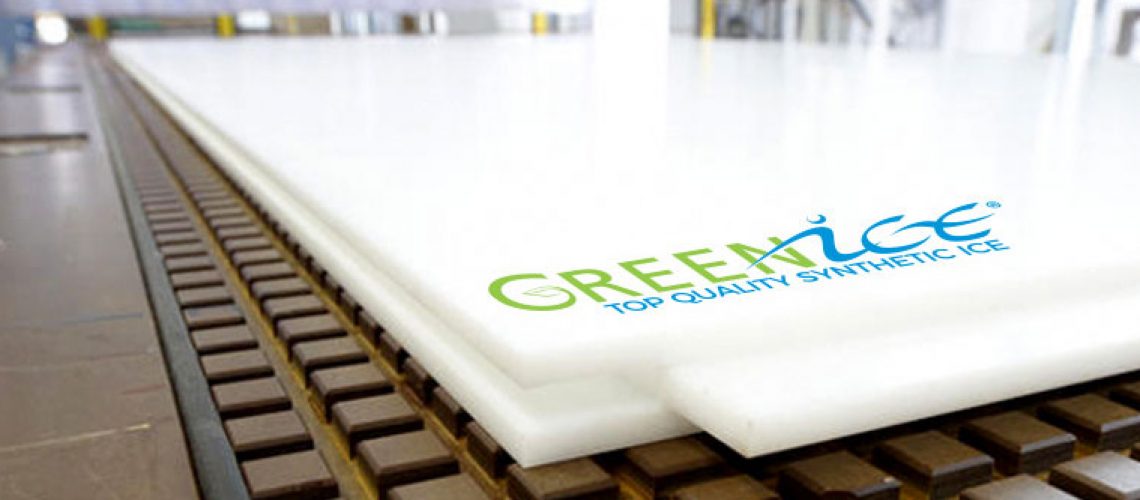Real ice vs. GreenIce synthetic ice — a comparative study
An artificial ice rink made out of real, mechanically frozen ice comes with expensive side effects such as high energy costs, a complex construction process and the need to be kept under constant maintenance. The gliding capability of a real ice rink is excellent but limited, as the ice needs to be resurfaced regularly when being used.
GreenIce synthetic ice rinks are made of 100% ecological, recyclable material and are endued with a homogenous surface, making for a gliding experience that feels almost like super smooth, untrodden ice.
Its UV stabilization allows for indoor & outdoor use from -50°C up to 50°C; it is mobile, quickly installed and multifunctional — with no energy costs involved.
But can ice skating on a synthetic ice rink really be compared to the real experience?
The Study
Objective: The goal of this study was the testing of a synthetic surface (synthetic ice) as a base for specific ice hockey training. It was to be determined whether ice hockey professionals could detect a noticeable difference between artificial ice (real, mechanically frozen ice) and the synthetic surface. Can specific ice hockey training take place on synthetic ice rinks? Can synthetic ice complement traditional training methods and be used as an alternative to real ice? Additionally, the validity and the reliability of the applied testing methods were discussed.
Method: 15 First League ice hockey players (highest Swiss amateur league) between the ages of 17 and 32 (M = 22.87, SD ± 4.47) completed one training per week throughout a period of eight weeks on the synthetic ice rink. After a settling-in period of two weeks, the subjects were tested via an 8-sprinting test and a repetitive sprinting test (8 x 30 m sprints in 30 second intervals) on both a synthetic ice rink and a real ice rink, to collect objective data. After five weeks of training on synthetic ice, the subjects were tested once again on the synthetic ice rink and the real ice rink via the 8-sprinting test and repetitive sprinting test. Additionally, the personal opinion of the subjects was gathered through a questionnaire.
Results: Ice hockey specific training can take place on synthetic ice. Ice skating is slower (8-sprinting test 2.89%, repetitive sprinting test 5.70%) and more straining on synthetic ice. Sharp cornering, puck-steering, passing and shooting technique are subjectively easier on synthetic ice. The 8-sprinting test shows a better validity (r = 0.85) for a performance comparison between synthetic ice and real ice than the repetitive sprinting test (r = 0.62) and the calculated fatigue index (r = 0.22).
Conclusion: Due to its similarity to real ice, synthetic ice offers the possibility to carry out ice hockey specific motion sequences very well and allows for methods of training that are specific to a form of sport. Besides the slightly lesser sliding capability of synthetic ice, the deceleration and stopping makes for the biggest difference between synthetic ice and real ice. The higher effort required for skating on synthetic ice offers potential for skate- and stamina-training. For a prediction of performance on real ice by use of a synthetic ice test, the 8-sprinting test is definitely preferable to the repetitive sprinting test and the calculated fatigue index.




